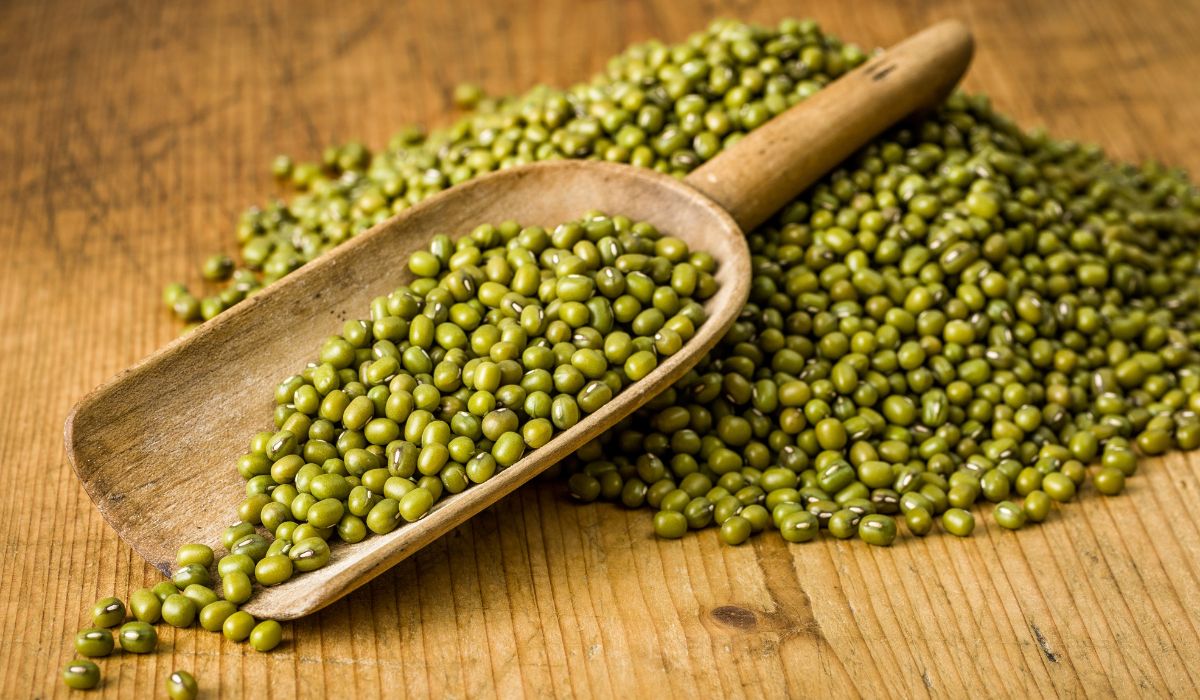Green gram, also known as mung beans, are a type of small, green legume that is native to Asia. They have been a staple food in Asian countries for centuries and are increasingly becoming popular in the West for their nutritional value and health benefits.
Mung beans are an excellent source of protein, fiber, vitamins, and minerals. They are low in calories and fat, and contain no cholesterol. They are also a good source of antioxidants and phytonutrients. Green grams have a variety of health benefits, including aiding in weight loss, lowering cholesterol levels, improving digestion, and reducing the risk of cancer.
They can be eaten cooked or sprouted, and are often used in soups, salads, curries, and stir-fries. If you’re looking for a nutritious and delicious addition to your diet, look no further than green grams!
Table of Contents
What are Green Gram (mung beans)?
Mung beans are a type of small, green legume that is native to Asia. They are commonly used in Chinese and Indian cuisine, and are a staple ingredient in many traditional dishes. Mung beans are a good source of protein, fiber, vitamins, and minerals.
They are also low in calories and fat. Mung beans can be eaten whole or sprouted. They can also be ground into flour or made into a paste. Mung bean paste is often used as a filling for dumplings and pastries.
Mung bean sprouts are often used as a garnish or side dish. Mung beans are a versatile ingredient that can be used in many different dishes. They can be cooked in soups, stews, curries, or stir-fries. Mung beans can also be used to make vegetarian burgers or patties.
Health benefits of Green Gram (mung beans)
Green Gram (mung beans) are a type of legume that is native to India. They are small, green, and have a slightly sweet flavor. Green Gram (mung beans) are a good source of protein, fiber, vitamins, and minerals. Green Gram (mung beans) have many health benefits.
They can help improve digestion, lower cholesterol levels, regulate blood sugar levels, and help with weight loss. Green Gram (mung beans) are also a good source of antioxidants and can help protect against some chronic diseases. So, if you’re looking for a healthy and nutritious food to add to your diet, consider Green Gram (mung beans)!
Side effects of Green Gram (mung beans)
Green Gram (mung beans) are generally considered safe to consume. However, some people may experience some side effects after eating them. The most common side effect is gas or bloating. This is because Green Gram (mung beans) contain a lot of fiber.
To avoid this, you can soak the beans in water for a few hours before cooking them. You can also cook them with ginger or add cumin to your dish to help reduce gas and bloating. Another potential side effect of consuming Green Gram (mung beans) is constipation. This is again due to the high fiber content of the beans.
To avoid this, make sure to drink plenty of water throughout the day and eat other high-fiber foods such as fruits and vegetables. If you have any allergies, it’s important to be aware that Green Gram (mung beans) may cause an allergic reaction in some people.
Symptoms of an allergic reaction include itching, swelling, and difficulty breathing. If you experience any of these symptoms after eating Green Gram (mung beans), seek medical attention immediately.
How to consume Green Gram (mung beans)?
There are many ways to consume green gram (mung beans). The most popular way is to cook them and eat them as a side dish or in a soup. You can also sprout them and add them to salads or sandwiches. Another way to consume them is to grind them into a flour and use it to make pancakes or bread.
Can I eat mung beans everyday?
Yes, you can eat mung beans every day. They are a highly nutritious food and have many health benefits. However, like all foods, they should be consumed in moderation. Eating too many mung beans can lead to side effects such as gas and bloating.
Conclusion
In conclusion, Green Gram (mung beans) are an extremely healthy food choice with a plethora of benefits. They are low in calories and fat, and high in protein, fiber, vitamins, and minerals. They also have a low glycemic index, making them a good choice for diabetics.
Additionally, they have been shown to lower cholesterol levels and improve digestion. However, as with any food, there are some potential side effects to be aware of. These include gas, bloating, and diarrhea. If you experience any of these side effects, please discontinue consumption immediately and consult your doctor.
